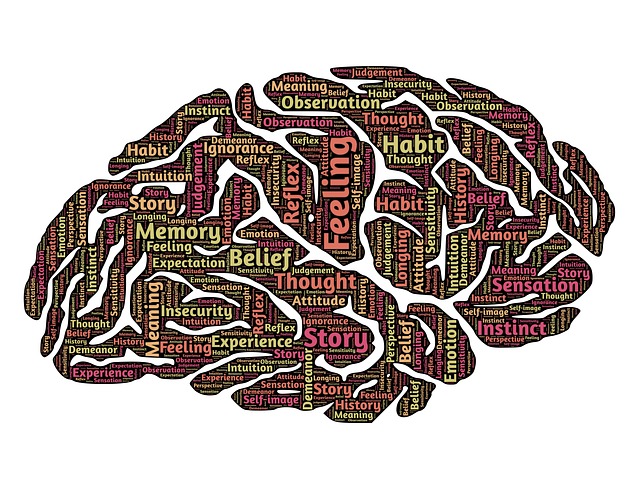 The one thing I wish more families heard when their loved one gets sick from a brain illness is this: Recovery is possible.
The one thing I wish more families heard when their loved one gets sick from a brain illness is this: Recovery is possible.
In the days after David’s suicide attempt, I learned about the stubborn reliance on psychotropic drugs as the main solution for people in mental health crisis and I witnessed the shocking limitations of an overtaxed and impersonal system. I was so grateful just to get a psychiatric bed for David. He’d lingered in the system for a few days after his suicide attempt, but many patients wait weeks for a bed — we were lucky, or so I thought.
The receptionist gave me directions to the psychiatric center. It took up one wing of the hospital. A social worker had prepared me on the phone for what I’d encounter once I got to the facility. A small box on the wall with a button. You push it and the people inside look at you through a camera to determine if you are safe. Two sets of heavily locked doors open. Then you surrender your purse, your shoes, and your belt. Only then can you see the patient.
The communal room was bare of windows, no pictures, no art anywhere. (Glass is considered dangerous.) Four tables were set up on one side of the room leading to a kitchen. There were small seating areas for families to visit, the kind of furniture you see in group homes that haven’t been updated in a decade.
The muted, bland colors on the couches would make anyone depressed. One man shuffled past, disoriented and mumbling. He took tiny steps, a couple of inches at a time, as if he were recovering from a stroke. The lighting was horrible, artificial, dim. The staffers sat behind heavy shatterproof glass laced with wire. They were completely walled off from the patients.
David led us to a furniture grouping, four chairs divided by a low table. His affect was flat, defeated. He told me hadn’t seen a doctor and didn’t expect to see his psychiatrist until the following week. I wondered what he would do in this bare and dismal place. He hated to sit still; it made him antsy and nervous. He was used to handling a dozen jobs, flying around in his truck, juggling two cell phones and the demands of clients. Hospitals are always boring, but this was even more so. There were no books or magazines, and no recreation room. There appeared to be nothing for him to do here. This place looked like One Flew Over the Cuckoo’s Nest, only smaller.
“Is that for the kids?” I asked, noticing a table in the corner set up with crayons and coloring books.
“That’s for us.” He raised his eyebrows. “They invited me to color this afternoon.”
Tears filled my eyes. I remembered my friend Claudine telling me once how she’d never asked a question David didn’t know the answer to. Whether it was politics or religion or history or mathematical theory, David was a walking encyclopedia. Full of stories. Full of life.
His psychiatrist was a brisk, no-nonsense woman who never made eye contact with David. When one drug made him so catatonic he couldn’t move, she simply administered another drug to correct his seemingly paralyzed and lifeless limbs. Her notes in David’s charts were unhopeful. “Patient not responding to X. Attempt Y.” The list of drugs attempted, doubled in dose, reduced, and then abandoned took up half a sheet of paper.
Medicines work wonders for many patients, but for others, there is often only partial relief and a number of unpleasant side effects. In David’s case, there was far too much emphasis on finding the right cocktail of drugs and far too little on helping him process the spiritual and emotional crisis he was suffering.
If I knew then what I know now, I would have worked with David’s family to find a gifted therapist, someone like Brian Goff.
Goff’s specialty is suicide. He’s seen more than 500 significantly suicidal patients. Goff says, “A large percentage of survivors I work with say they regret the choice of attempting suicide. Rarely have people actually wanted to die. They just didn’t want to live the way they were living.”
Goff has worked at the forefront of several therapies that offer promise for the most deeply troubled patients. Intensive therapies, such as dialectical behavior therapy (DBT) and cognitive behavioral therapy (CBT), have reduced rates of repetition of deliberate self-harm. Goff cofounded a DBT clinic and has used that technique successfully with hundreds and hundreds of patients. Now, he’s combined what he sees as the best elements of both in a treatment that uses mindfulness blended with cognitive behavioral psychotherapies.
Goff begins with this premise: people want to live a life worth living. And if they can be given the tools to help them ease the struggle of their present condition, they can begin building a life worth living. The new hybrid therapy, acceptance and commitment therapy (ACT), focuses on modifying the functions rather than the forms of symptoms, using acceptance and mindfulness strategies.
Goff asks his patients a theoretical question that provides insight into the behavioral component of suicidal ideation: “If I had a magic wand and I could do something, anything, for you, would you say, ‘Please kill me’? In all the years I’ve asked it, I’ve never heard ‘Yes, please kill me,’” Goff says. “The answer is, ‘Cure my Parkinson’s.’ ‘End my depression.’ ‘Save my marriage.’ ‘Prevent my bankruptcy. I want to live, just not like this.’”
